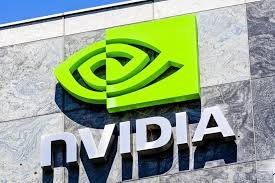The artificial intelligence (AI) revolution is no longer a futuristic concept—it’s here and transforming industries at an unprecedented pace. From self-driving cars to advanced healthcare diagnostics, AI’s applications are vast and growing exponentially. Investors who recognized this trend early have already reaped massive rewards, but the AI boom is far from over. As we look toward 2025, the sector is poised for even greater expansion, driven by breakthroughs in machine learning, generative AI, and automation.
2025 could be a defining year for AI stocks, as companies leading in AI infrastructure, software, and hardware will likely dominate their respective markets. The rapid adoption of AI-powered tools across businesses, governments, and consumer applications means that the most innovative firms today could become the next tech giants. However, not all AI stocks are created equal—some will thrive, while others may struggle with competition, regulation, or execution risks.
This article explores the best AI stock for 2025 by analyzing key players, market trends, and financial health. We’ll dive into the factors that make sure companies stand out, assess their growth potential, and provide insights to help investors make informed decisions. Whether you’re a long-term investor or looking for high-growth opportunities, understanding the AI landscape will be crucial in the coming years.
Why Invest in AI Stocks?
The AI industry is experiencing explosive growth, with projections suggesting the global AI market could exceed $1.8 trillion by 2030. This expansion is fueled by increasing demand for automation, data analytics, and intelligent systems across every sector. Businesses are integrating AI to enhance productivity, reduce costs, and gain competitive advantages. Governments are investing in AI for defense, smart cities, and public services. Even consumers interact with AI daily through virtual assistants, recommendation algorithms, and autonomous technologies.
Several key trends are driving AI’s dominance. Generative AI, led by models like ChatGPT and Midjourney, has opened new revenue streams in content creation, coding, and customer service. Cloud computing giants are embedding AI into their platforms, making advanced tools accessible to enterprises of all sizes. Meanwhile, edge AI—where AI processes data locally on devices rather than in the cloud—is gaining traction in IoT, smartphones, and autonomous vehicles. These innovations ensure that AI will remain a high-growth sector for years to come.
Investing in AI stocks isn’t just about chasing hype—it’s about identifying companies with sustainable advantages. The best AI stocks have strong revenue growth, proprietary technology, and scalable business models. They also operate in industries where AI adoption is accelerating, such as healthcare (AI-driven drug discovery), finance (algorithmic trading), and manufacturing (predictive maintenance). By focusing on these leaders, investors can position themselves for substantial returns as AI continues to reshape the global economy.
Criteria for Selecting the Best AI Stock
The AI sector is brimming with companies claiming to be at the forefront of innovation, but not all are positioned for long-term success. As we evaluate potential investments for 2025, it’s crucial to look beyond the hype and focus on fundamental strengths. Below, we expand on the key criteria that separate the best AI stocks from the rest.
1. Revenue Growth and Profitability: The Foundation of a Strong AI Investment
A company’s financial performance is the most objective measure of its viability. In the AI space, where many startups operate at a loss while scaling, profitability and sustainable revenue growth are critical indicators of long-term success.
Why It Matters:
- Consistent Revenue Growth: Companies with steadily increasing revenues demonstrate market demand for their products. For example, NVIDIA’s data center revenue grew by over 400% year-over-year in recent quarters due to AI chip demand.
- High Gross Margins: AI software companies (like Palantir) often boast 70%+ gross margins, while hardware firms (like AMD) typically have lower but improving margins. High margins indicate pricing power and scalability.
- Path to Profitability: Many AI startups burn cash to acquire market share. Investors should favor companies that are either already profitable (Microsoft, NVIDIA) or have a clear roadmap to profitability (e.g., through recurring enterprise contracts).
Red Flags:
- Companies with declining revenue growth or dependence on a single customer (e.g., some small-cap AI firms reliant on government contracts).
- Excessive stock-based compensation diluting shareholder value (common in pre-profitability tech firms).
Key Metrics to Watch:
- Revenue CAGR (3-5 years)
- Free cash flow margin
- Operating leverage (how efficiently revenue growth translates to profits)
2. Innovation and R&D Investments: The Engine of AI Leadership
AI is a rapidly evolving field where today’s cutting-edge technology can become obsolete in years. Companies that consistently innovate will dominate.
Why It Matters:
- R&D Spending as a % of Revenue: Top AI firms reinvest 15-25% of revenue into R&D (e.g., NVIDIA spends ~$8B annually). This fuels breakthroughs like generative AI and quantum machine learning.
- Patents and Proprietary Tech: Google’s Transformer architecture (the “T” in ChatGPT) and NVIDIA’s CUDA platform are examples of defensible IP that create long-term advantages.
- Partnerships with Academia/Tech Leaders: Collaborations with universities (e.g., MIT AI labs) or tech giants (Microsoft + OpenAI) signal credibility and access to top talent.
Case Study: NVIDIA vs. Intel in AI Chips
- NVIDIA’s early bet on GPU-accelerated AI (vs. Intel’s CPU focus) allowed it to dominate machine learning. Intel is now playing catch-up with its Gaudi AI chips.
Red Flags:
- Declining R&D spend relative to competitors.
- Lack of patent filings or reliance on third-party AI models (e.g., some SaaS companies using OpenAI’s API without unique differentiation).
3. Competitive Moats: What Keeps Rivals at Bay?
In AI, competitive advantages (“moats”) determine whether a company can sustain leadership. The strongest moats in AI include:
A. Hardware Dominance (NVIDIA, AMD)
- NVIDIA controls ~90% of the AI accelerator market (H100, Blackwell chips). Its CUDA ecosystem locks in developers.
- Switching costs are high—retraining AI models on new hardware is prohibitively expensive for most firms.
B. Exclusive Data (Palantir, BloombergGPT)
- Palantir’s government contracts provide non-public datasets for training its AI models.
- Bloomberg’s financial data powers its BloombergGPT, which most competitors can’t easily replicate.
C. Network Effects (Microsoft, Google)
- Microsoft’s GitHub Copilot benefits from its vast developer community—the more users, the smarter the AI gets.
- Google Search’s AI overviews improve as more people use them, creating a feedback loop.
D. Scale Advantages (Amazon, Meta)
- AWS’s AI infrastructure scale allows it to offer cheaper AI tools than smaller rivals.
- Meta’s Llama models leverage its massive user data (though regulatory risks exist).
Weak Moats to Avoid:
- Companies with no proprietary data or tech (e.g., AI wrappers around ChatGPT).
- Low barriers to entry (e.g., open-source AI models eroding pricing power).
4. Regulatory and Market Risks: Navigating the AI Landscape
AI’s rapid growth has attracted scrutiny. Investors must assess:
A. Geopolitical Risks
- U.S.-China AI race: Export controls on AI chips (NVIDIA’s restricted A800 chips) may limit growth in key markets.
- Data localization laws (EU, China) could force costly compliance for global AI firms.
B. Ethical and Legal Challenges
- EU AI Act classifies high-risk AI uses (e.g., facial recognition)—fines for non-compliance could reach €30M or 6% of revenue.
- Copyright lawsuits (e.g., artists vs. Stable Diffusion) may impact generative AI firms.
C. Competition Risks
- Open-source threats: Meta’s Llama 3 and Mistral’s models are free alternatives to paid AI tools.
- Hyperscaler competition: AWS, Google, and Microsoft are vertically integrating AI, squeezing standalone vendors.
Mitigating Risks:
- Invest in companies with diversified revenue streams (e.g., Microsoft’s enterprise software + Azure AI).
- Monitor regulatory filings and management commentary on compliance (e.g., Palantir’s FedRAMP certifications for government work).
Synthesis: The Ideal AI Stock for 2025
The best AI stock for 2025 will likely exhibit:
- Revenue growth > 30% annually with expanding margins.
- R&D spends> 15% of revenue and a patent portfolio.
- At least one unassailable moat (hardware, data, or network effects).
- A strategy for regulatory hurdles (e.g., NVIDIA’s compliant chips for China).
Top Candidates Based on These Criteria:
- NVIDIA (NVDA): Unmatched in AI chips, but valuation is rich.
- Microsoft (MSFT): Balanced growth + stability with Azure AI.
- Palantir (PLTR): High-risk, high-reward with government AI moats.
Top AI Stock Picks for 2025
Here are the 5 top AI stocks for 2025, including an additional pick with detailed explanations and sources for further research:
1. NVIDIA (NVDA) – The AI Chip King

Why? NVIDIA dominates AI hardware with its H100 and upcoming Blackwell GPUs, essential for AI training (e.g., ChatGPT). Its CUDA software platform locks in developers, while expansions into robotics (Isaac AI) and AI-powered data centers drive growth.
Financials: Data center revenue surged +409% YoY (Q1 2025), with cloud giants (AWS, Azure) relying on its chips.
Outlook: Continued AI adoption and chip demand make NVDA a top pick.
🔗 NVIDIA Investor Relations
2. Microsoft (MSFT) – The Enterprise AI Leader
Why? Microsoft’s OpenAI partnership (ChatGPT, Copilot) integrates AI into Azure, Office 365, and GitHub. Its $10B OpenAI investment ensures cutting-edge generative AI tools for businesses.
Financials: Azure AI revenue grew +31% YoY, with AI features boosting Office subscriptions.
Outlook: Low-risk exposure to AI via entrenched enterprise products.
🔗 Microsoft AI Innovations
3. Advanced Micro Devices (AMD) – The Rising Challenger
Why? AMD’s MI300X GPU competes with NVIDIA in data centers, offering cost efficiency. Partnerships with Meta, Microsoft, and Oracle signal growing adoption.
Financials: AI chip revenue could hit 4�+��2025(������2025 (up from 1B in 2024).
Outlook: If AMD captures even 10% of NVIDIA’s market, it could double its stock price.
🔗AMD AI Solutions
4. Palantir (PLTR) – The AI Software Specialist
Why? Palantir’s Gotham (defense) and Foundry (enterprise) platforms use AI for data-driven decisions. Government contracts (e.g., Pentagon) provide stability, while commercial growth (e.g., healthcare) offers upside.
Financials: Revenue grew +21% YoY, with fourth straight profitable quarter.
Outlook: High risk/reward as AI adoption expands in the government and private sectors.
🔗 Palantir AI
5. Taiwan Semiconductor (TSM) – The AI Chip Enabler
![]()
Why? TSMC manufactures chips for NVIDIA, AMD, and Apple, making it critical to AI hardware. Its 3nm/2nm process nodes lead the industry, ensuring dominance in advanced AI chips.
Financials: AI-driven demand could boost revenue by +20% in 2025.
Outlook: A “picks-and-shovels” play on AI growth with less volatility than NVIDIA or AMD.
Honorable Mentions
- Alphabet (GOOGL) – DeepMind, Gemini AI, and cloud AI tools.
- Tesla (TSLA) – Full Self-Driving (FSD) and Optimus robot.
- AI ETFs – Diversified exposure via funds like Global X Robotics & AI (BOTZ).
Risks and Challenges
Investing in artificial intelligence (AI) stocks presents a compelling opportunity, yet it is not devoid of significant risks. Regulatory crackdowns, such as the European Union’s AI Act, could impose stringent compliance requirements, potentially hampering innovation and profitability. Market saturation poses another challenge as the increasing number of AI-driven companies intensifies competition, potentially leading to diminishing returns for investors. Moreover, technological disruptions can swiftly render existing AI models or platforms obsolete, necessitating continuous adaptation and reinvestment.
A further concern is that many AI stocks may be overvalued, fueled by speculative enthusiasm rather than tangible earnings, increasing the likelihood of market corrections that could erode investor confidence. Given these uncertainties, prudent investors should prioritize diversification to mitigate exposure to sector-specific volatility. Furthermore, maintaining a long-term perspective is essential, as the AI industry will likely experience cyclical fluctuations before reaching full maturity.
Conclusion
The AI revolution is still in its early stages, and the best AI stocks for 2025 will be those that combine innovation, financial strength, and market dominance. NVIDIA stands out as the top pick due to its unparalleled position in AI hardware, but Microsoft and AMD also offer compelling opportunities.
Investors should consider their risk tolerance—established players like Microsoft provide stability, while smaller firms like Palantir offer higher growth (and higher risk). Regardless of the choice, AI is a transformative force that will shape the next decade of investing.
As with any investment, thorough research and a long-term perspective are essential. By focusing on companies with durable competitive advantages, investors can capitalize on the AI boom and potentially achieve significant returns by 2025 and beyond.






